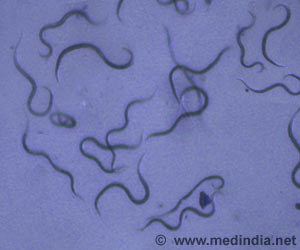Under changing conditions, if the leaves can't change too, will giant sequoia groves and other old-growth conifer forests be at heightened risk of degradation?

Under changing conditions, if the leaves can't change too, will giant sequoia groves and other old-growth conifer forests be at heightened risk of degradation? If the leaves do change, how will that impact the trees and the larger ecosystem? To address these questions, they published 'Phenotypic plasticity of leaves enhances water-stress tolerance and promotes hydraulic conductivity in a tall conifer', in a recent issue of the American Journal of Botany.
"Leaf anatomy is often viewed as an old-fashioned thing to study," Chin acknowledges, "but modern analytical tools are letting anatomists scale up our observations." Such analyses enable researchers to use data from leaf variation to predict whole-tree and ecosystem responses to ecological changes.
Chin and Sillett roped up to climb and gather samples from across the crowns of five giant sequoia trees. The five stand in a montane forest within Sequoia National Park and are part of ongoing studies by this team and others. Like all giant sequoias, these five have a short growing season and depend on melting snowpack from the Sierra Nevada mountains for many months of the year. Low snowpack creates drought conditions for the trees. Even in wet years, giant sequoia trees have the challenging task of conducting water up hundreds of feet, against gravity, to carry through processes for photosynthesis. Drought could make their job even more difficult.
Can they cope? What traits make the leaves function while water-stressed? Chin and Sillett suspected several traits, from stem diameter to succulence to fiber count, may play a hand. From their samples, the researchers measured 18 structural traits of shoots and leaves. They also manipulated some samples for an induced-drought experiment, pioneering a new 'sealed-end' method of dipping the cut ends of samples into wax to more realistically provoke physiological responses.
Their analyses reveal that giant sequoia leaves do respond in patterned ways to environmental conditions and changes. Overall, leaf anatomy varies more due to the availability of water than to the availability of light. The leaves growing in the 'toughest', most exposed places at the top of the crown grow better suited to withstand water stress than leaves in the lower crown do. Structures within leaves called transfusion tissue are surprisingly large in giant sequoia leaves and seem to promote water flow through the leaf. All of these traits enhance the giant sequoia's ability to grow large and tall through targeted investments to meet water-stress challenges.
Advertisement
What's more, according to Chin and Sillett, the transfusion tissue also accumulates heat and drives transpiration. It does this by intercepting radiation from the leaf's interior and evaporating water - not unlike the cooling systems in our everyday electronics. The giant sequoia's leaf pores, or stomata, on the surface and undersides of upper crown leaves provide ample opportunity for the vapor to diffuse. Harnessing heat to boost the rate of water movement allows these trees to take advantage of 'narrow daily windows' for photosynthesis during the short Sierra summer. Chin says that the adaptations for 'radiation-driven transpiration may help these massive trees 'make hay while the sun shines' through rapid hydraulic throughput'.
Advertisement
Source-Eurekalert










